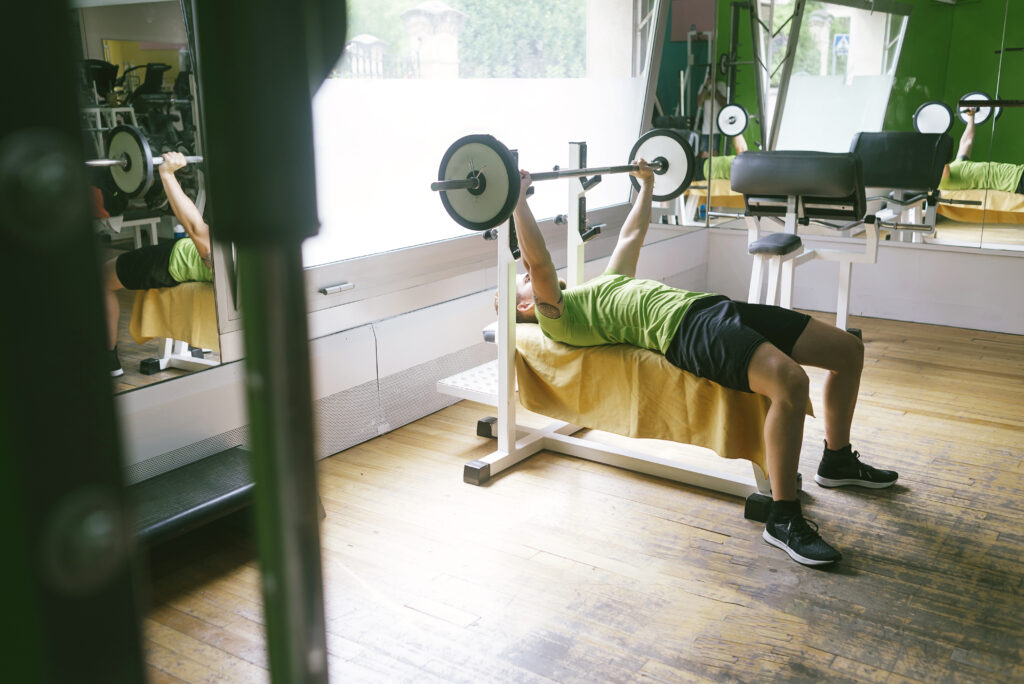The bench press is one of the most popular strength training exercises worldwide, essential for building upper body strength and muscle mass. Whether you are a beginner stepping into the gym for the first time or an experienced lifter, understanding the equipment is crucial. A common question that arises is: How heavy is a bench press bar ?
Knowing the weight of the bench press bar is important because it helps you accurately calculate the total weight you’re lifting, plan your workouts, and track progress safely.
In this article, we’ll cover everything you need to know about the weight of bench press bars, including standard barbell weights, variations, and tips for using them effectively.
What Is a Bench Press Bar?
A bench press bar is essentially a type of barbell designed to be used in the bench press exercise. The barbell is loaded with weight plates on either side and is typically placed on a rack above a bench. You lie on the bench and press the barbell upward to work your chest, shoulders, and triceps.
Standard Weight of a Bench Press Bar
Olympic Barbell (Standard Bench Press Bar) – 20 kg (44 lbs)
The most common bench press bar you’ll find in gyms worldwide is the Olympic barbell, which weighs 20 kilograms, or about 44 pounds. This barbell is 7 feet (2.2 meters) long and typically 28mm to 29mm in diameter.
Olympic barbells are designed to handle heavy loads and are used for multiple lifts, including the bench press, squat, and deadlift. They feature rotating sleeves to allow plates to spin freely, reducing stress on the wrists during lifts.
Variations in Bench Press Bar Weight
While the 20 kg barbell is the standard, there are several variations in bar weight and design that you might encounter, especially in different gyms or for specific training purposes:
1. Women’s Olympic Barbell – 15 kg (33 lbs)
Designed for female lifters, the women’s Olympic bar is slightly shorter (about 6.5 feet or 2 meters) and lighter, weighing 15 kg or 33 pounds. The diameter is thinner, usually around 25mm, which makes it easier to grip for those with smaller hands.
2. Training or Technique Bars – 10 kg (22 lbs)
Some gyms provide lighter bars designed for beginners to practice form without heavy loads. These technique bars typically weigh 10 kilograms or 22 pounds and are shorter and thinner than Olympic bars.
3. Powerlifting or Specialty Bars
Certain specialty bars, such as powerlifting bars or bench-specific bars, may have slight weight differences but usually hover around 20 kg. Powerlifting bars might be stiffer to prevent bending during heavy lifts.
4. Standard or Fixed Bars
Some home gyms or commercial gyms might have fixed-weight barbells that weigh less than the Olympic standard, such as 15 or 25 pounds, but these are less common for bench pressing heavy loads.
Why Knowing the Bar Weight Matters
When tracking your bench press progress or setting personal records, it’s essential to factor in the bar weight along with the plates. For example, if you load 100 pounds of plates on a standard Olympic bar, the total weight lifted is actually 144 pounds (100 + 44). Ignoring the bar weight can lead to miscalculations in your training logs and affect your workout planning.
How to Safely Handle the Bench Press Bar
Beginners Should Start Light
If you’re new to bench pressing, start with just the bar or a lighter technique bar to learn proper form and avoid injury. This approach helps you build confidence before adding plates.
Use a Spotter or Safety Equipment
Especially when lifting heavy, it’s important to have a spotter or use safety pins/racks. Knowing the weight of the bar will help your spotter assist you effectively.
Maintain Proper Grip and Wrist Position
Olympic bars have a standard diameter, but thinner bars can improve grip strength. Ensure you grip the bar evenly and keep wrists neutral to prevent strain.
Common Misconceptions About Bench Press Bar Weight
- All bench press bars weigh the same: Not true. While 20 kg is standard, variations exist depending on the bar type and manufacturer.
- Home gym bars are Olympic standard: Many home gyms use lighter or fixed-weight bars, so always check your bar weight before lifting.
- You don’t need to include bar weight: Always add bar weight to plate weight to track total lifted accurately.
Summary
To answer the question “How heavy is a bench press bar?” the standard answer is:
- 20 kg (44 lbs) for a standard Olympic bench press bar
- 15 kg (33 lbs) for a women’s Olympic bar
- 10 kg (22 lbs) for technique or training bars
Knowing these weights ensures you correctly calculate the total weight you’re lifting and plan your workouts efficiently. Whether you are a beginner or advanced lifter, always be mindful of the bar weight as part of your training routine.
Final Tip
If you’re uncertain about your gym’s bench press bar weight, ask a trainer or use a scale to measure it before starting your session. This small step will help you track your strength progress and avoid lifting mistakes.

